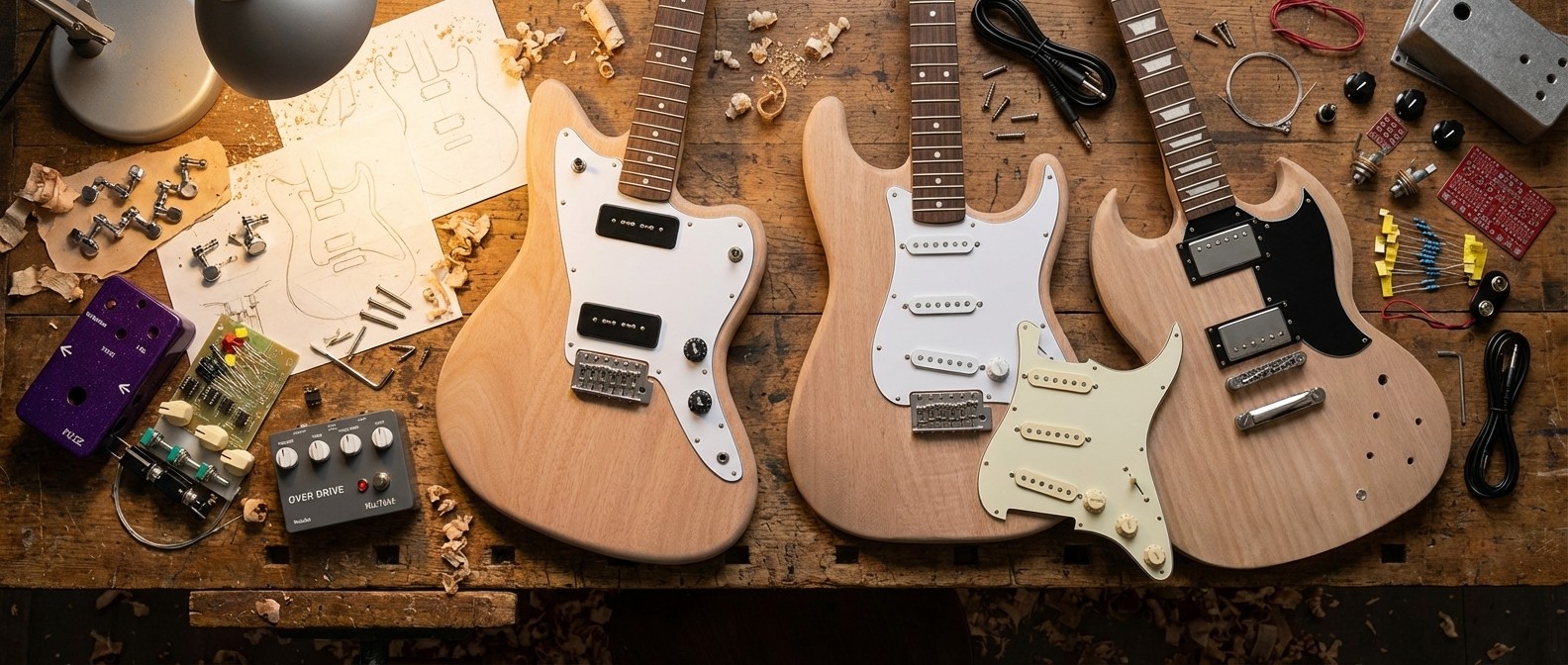Around the World in Seven Scales
There's a great big world out there, and the large selection of non-Western scales that it offers can add an intriguing twist to your playing.

Musicians on this side of the pond often get caught in a rut, concocting tunes and solos in a typical Westernized manner.
But there’s a great big world out there, full of music from other countries and cultures that can be easily added to your repertoire.
Scales from around the world can add an intriguing twist to your playing, giving you the sounds of the Far East, Middle East, Eastern Bloc and Latin America. You can hear many of these tonalities in the ax work of players like John McLaughlin, Al Di Meola, Marty Friedman and Yngwie Malmsteen. This lesson will serve as a guided musical tour of select sounds from across the globe.
HARMONIC MINOR: (1-2b3-4-5-b6-7) Pioneered in the Seventies by Michael Schenker, Ritchie Blackmore and Uli John Roth, neoclassical metal rose to the rock forefront in the mid Eighties when chopsmeister Yngwie Malmsteen stepped onto the scene.
The Bach rocker’s scale of choice was harmonic minor, played in FIGURE 1 in the key of G# minor (G#-A#-B-C#-D#-E-G). Anchor your hand in 7th position for the duration of the figure, and use alternate picking (down, up, down, etc.) throughout.
JAPANESE: 1-b2-4-5-b6 Lacking a 3rd or 7th, and therefore tonally ambiguous, the versatile Japanese scale works well in a variety of situations, including major- and minor-key progressions, as well as Phrygian-based contexts.

FIGURE 2 is based on the E Japanese scale (E-F-A-B-C). Take a rubato approach here—that is, let the tempo fluctuate, altering your phrasing in a way that feels right to you.
All the latest guitar news, interviews, lessons, reviews, deals and more, direct to your inbox!
CHINESE: 1-2-3-5-6 Many of you are already familiar with the Chinese scale. You just know it by its Western name: major Pentatonic. In the Western world, this sound is heard perhaps most famously in the work of the Allman Brothers.
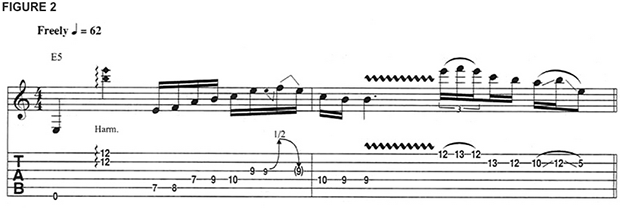
FIGURE 3, on the other hand, has a distinctly non-Western sound, courtesy of the timbre (sound quality) of its notes and how they’re phrased. Derived from the B Chinese scale (B-C#-D#-F#-G#), this ethereal line uses harp harmonics to evoke the sound of the zither, a traditional stringed instrument.
To execute each harmonic, lightly rest your pick hand’s 1st finger on the octave of the pre-fretted note (i.e. 12 frets higher), and pluck the string with your pick-hand’s thumb.
PHRYGIAN DOMINANT: 1-b2-3-4-5-b6-b7 The fifth mode of the harmonic minor scale, Phrygian dominant provides the exotic ambience heard in Al Di Meola’s “Egyptian Danza” and Iron Maiden’s “Powerslave.”
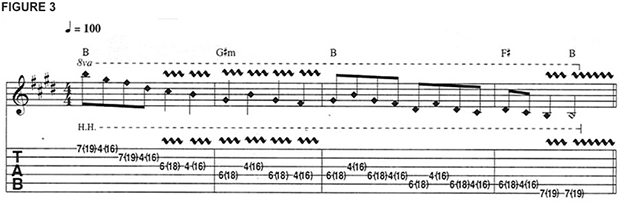
The G-rooted (G-Ab-B-C-D-Eb-F) lick in FIGURE 4 combines slurred note groupings with static open-string drones to create a distinctly Egyptian sound. Make sure you pay close attention to the fret-hand shifts here. Measure 1 is played in 3rd position, while measure 2 dips into 1st position.
GYPSY: 1-b2-3-4-5-b6-7 The Gypsy scale differs from the Phrygian dominant by using a major rather than a minor 7th for additional color. Both the Phrygian dominant and the Gypsy scale provide excellent soloing options over chord progressions containing major chords a half step apart.

For example, try playing the E Gypsy scale over an E-F vamp. The E-rooted (E-F-G#-A-B-C-D#) riff in FIGURE 5 calls to mind Rainbow’s “Gates of Babylon,” on which Ritchie Blackmore takes the listener on an incredible journey by way of the Gypsy scale. Be sure to palm-mute the 6th string throughout, so that the above melodic line really comes across.
HUNGARIAN MINOR: 1-2-b3-#4-5-b6-7 If you’ve been searching for a cool scale to play over a minor (maj7) chord, then the Hungarian minor scale is just what you need.
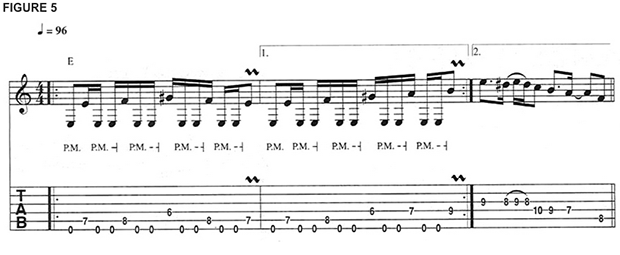
The majority of the A Hungarian minor (A-B-C-D#-E-F-G#) passage in FIGURE 6 is rooted in 7th position, with the exception of the closing chromatic phrase, which sits in 11th position. In learning this figure, you might want to first isolate the 16th-note slur on beat 3 of bar 4. To get this legato turn to sound as smoothly as possible, use your 2nd, 3rd and 1st fingers, respectively, on frets 12, 13 and 11.
PERSIAN: 1-b2-3-4-b5-b6-7 We’ll close things out with the E Persian scale (E-F-G#-A-Bb-C-D3), which gets its dark Middle Eastern vibe from its b5, or tritone, interval. Because it contains both a major 3rd and a major 7th, the Persian scale serves as an interesting option for Lydian-based chords (maj7#11). But it can also be used as a basis for sinister metal riffs like the one in FIGURE 7, For the last two beats of bar 2, use your fret hand’s 1st, 2nd, 3rd and 4th fingers in consecutive order.
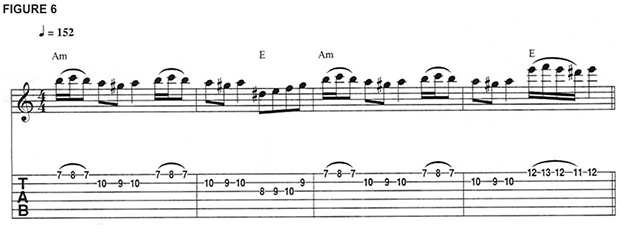
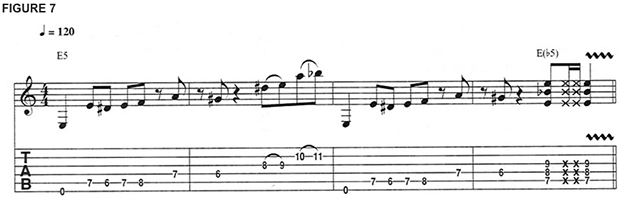
Since 1980, Guitar World has been the ultimate resource for guitarists. Whether you want to learn the techniques employed by your guitar heroes, read about their latest projects or simply need to know which guitar is the right one to buy, Guitar World is the place to look.

